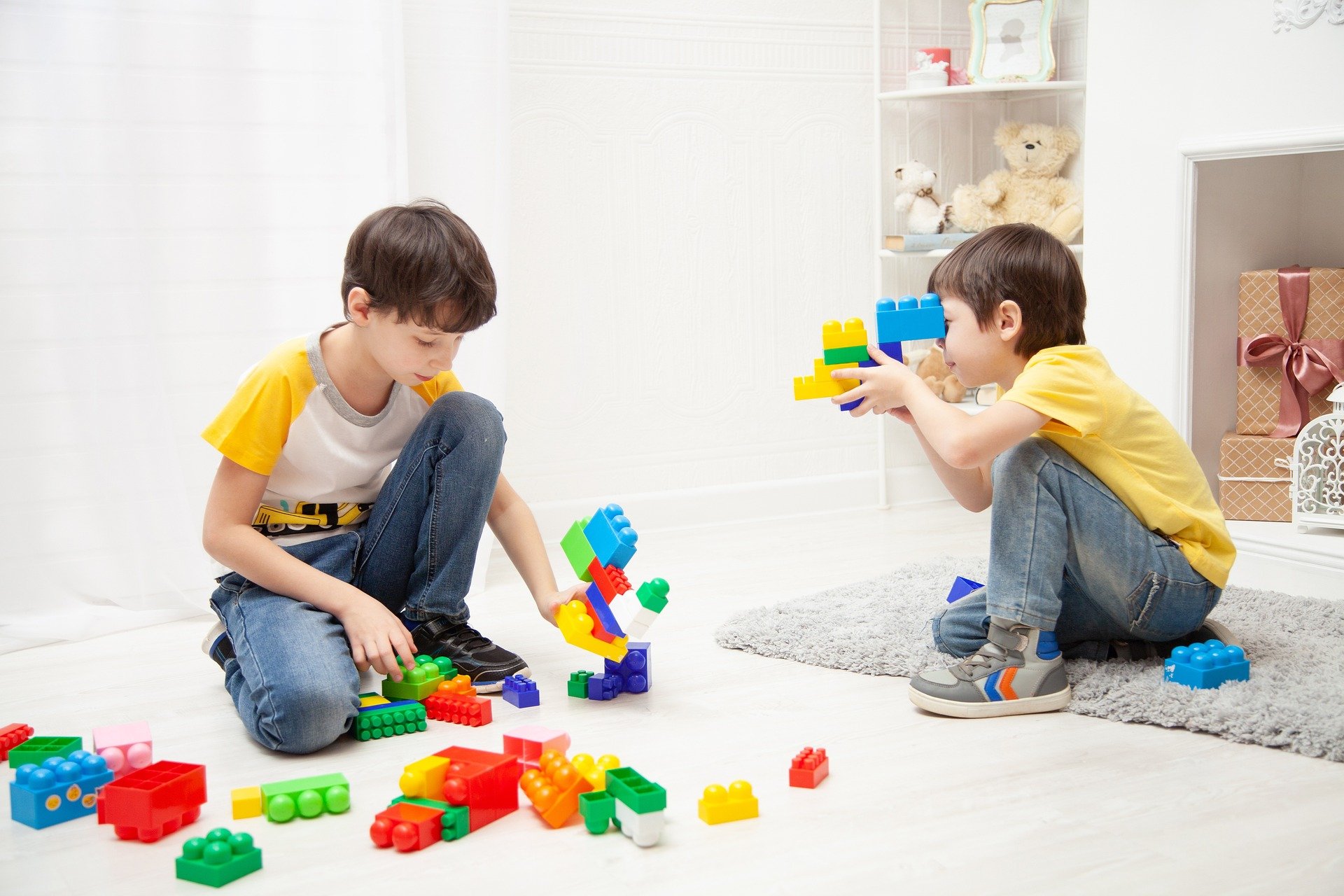
Like smiling, walking, and talking, the ability to share is just another developmental milestone that your children are going to reach at some point in time.
12 – 18 months
Children as young as a year old may offer food or bring objects to parents and caregivers in what seems like an act of sharing. However, it is more likely that they are seeking approval or a positive reaction from their parent. It may also be an act of playfulness to try to engage the adult.
18 – 36 months
At this age, children may start understanding the concept of possession. They may become angry if someone takes their own (as opposed to a neutral) toy away from them. Children are still, very naturally, in a self-absorbed phase. They have a limited understanding of what others might feel or want, while at the same time think that everyone around them is explicitly aware of what they want. So, Sybil could become frustrated that Cayden won’t give her the ambulance with flashy lights, but Cayden has no idea that Sybil might also want to play with it.
3 – 5 years old
At this point, kids become more interested in playing with other children rather than playing alongside them (parallel play). Sharing becomes more relevant because they may find that a friend doesn’t want to play with them again if they don’t share.
Children over the age of 3 are developing the ability to comprehend the needs and wants of others. They may be able to take a quick break from the toy that they are playing with to allow another child to have a turn. They are also coming to terms with their impulse control. So they can learn to wait and not immediately grab something they want to play with irrespective of whether Suzie is playing with it. This makes the process of taking turns and conversations about sharing that much easier to navigate.
A 3-year-old may still be entirely focused on the present and find it challenging to relate to only being able to play with a toy in five- or ten-minutes time when Mary is finished with it. However, from this point, they become more aware of the meaning of certain periods and become comfortable with the idea of delayed gratification.
Teach Children How to Share: Six Tips
Solid sharing skills usually only become apparent in children from 3.5 to 4 years old. However, there are some teaching strategies for sharing that parents can apply to help their kids on this journey from a much earlier age.
- Language is critical. To avoid confusion, don’t use the word ‘sharing’ when you mean ‘taking turns’.
- In the toddler years, make the most of parallel play. Toddlers enjoy parallel play. It is a valuable method of teaching them to enjoy each other’s company while peacefully playing with their toys.
- Allow Sarah to have a long turn with the coveted toy. Toby can be redirected to another activity until Sarah is ready to give it to him. She is more likely to learn that sharing is an empowering and positive experience.
- Point out good examples of sharing.
- Chat with your little one about why sharing is good for them and their friends.
- Model sharing when you play with your kids.
Why is Sharing Important for a Child?
Why are parents so heavily invested in our children’s ability to share? Sure, being able to share with friends looks good when you’re at a playdate or when you meet people at the park. But what is the long-term goal of teaching children to share? Most parents want their children to grow into kind and generous adults who notice and respond to the needs of those around them. Sharing is a significant stepping-stone on the path to mastering these skills.



